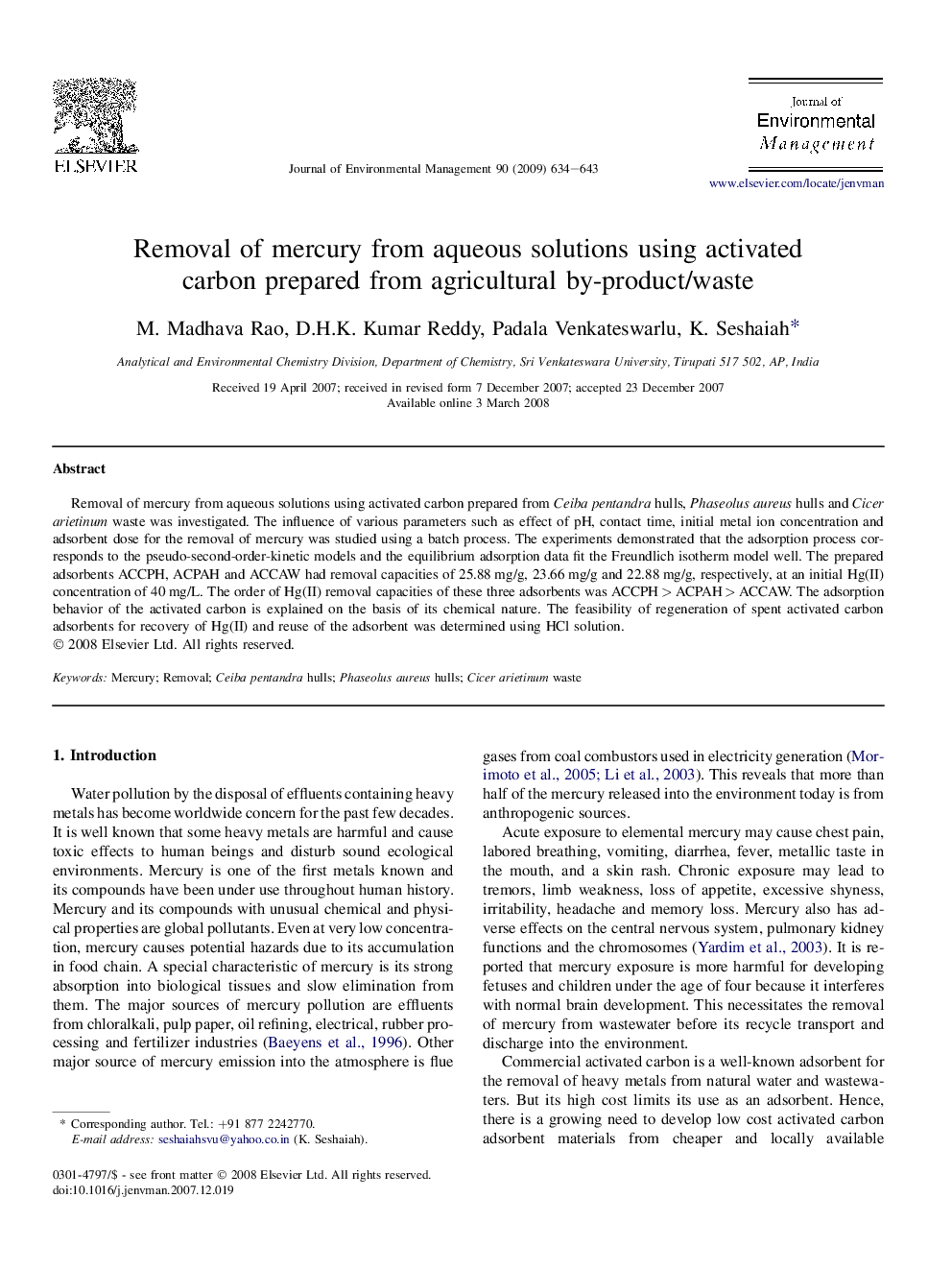| Article ID | Journal | Published Year | Pages | File Type |
|---|---|---|---|---|
| 1058130 | Journal of Environmental Management | 2009 | 10 Pages |
Removal of mercury from aqueous solutions using activated carbon prepared from Ceiba pentandra hulls, Phaseolus aureus hulls and Cicer arietinum waste was investigated. The influence of various parameters such as effect of pH, contact time, initial metal ion concentration and adsorbent dose for the removal of mercury was studied using a batch process. The experiments demonstrated that the adsorption process corresponds to the pseudo-second-order-kinetic models and the equilibrium adsorption data fit the Freundlich isotherm model well. The prepared adsorbents ACCPH, ACPAH and ACCAW had removal capacities of 25.88 mg/g, 23.66 mg/g and 22.88 mg/g, respectively, at an initial Hg(II) concentration of 40 mg/L. The order of Hg(II) removal capacities of these three adsorbents was ACCPH > ACPAH > ACCAW. The adsorption behavior of the activated carbon is explained on the basis of its chemical nature. The feasibility of regeneration of spent activated carbon adsorbents for recovery of Hg(II) and reuse of the adsorbent was determined using HCl solution.
